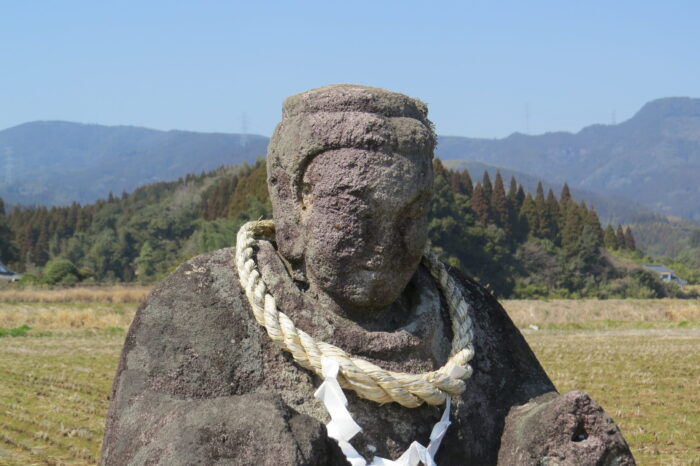Kirishima Geopark is an area centered on the Kirishima Mountains, which is a group of more than 20 active volcanoes lying on top of each other. Other than the Kirishima Mountains, there are also a variety of volcanic landforms to visit in the surrounding area, including multiple calderas and Shirasu plateaus.
Volcanic activities not only create landforms, but also various natural environments and ecosystems, and blessings such as hot springs and spring water.
Volcanoes have also influenced lifestyle and culture at the foot of the mountains. The influence of volcanoes can be seen in the stone culture and belief in volcanoes (shrines, etc.) that remain in various areas, as well as in the food culture of the region, including local specialties such as imo-jochu (sweet potato shochu) and tea.
A place where you can think about “what is a volcano” and experience the way of life and the culture of people who have lived at the foot of an active volcano, that is what Kirishima Geopark.

Caldera
A landform formed during an eruption, when a large amount of magma that had accumulated underground erupted all at once, causing the ground to plunge and sink into the hollowed-out beneath. A caldera eruption is a massive eruption of a magnitude such that once it occurs, it can destroy the surrounding civilization, and such eruptions occur once every few tens of thousands of years in Southern Kyushu.
Shirasu
The accumulation of large pyroclastic flows (a phenomenon in which volcanic ash, pumice, hot gasses, etc. flow in unison) that erupted during caldera eruptions. Shirasu is a folk name in Southern Kyushu and generally refers to the Ito Pyroclastic Flow deposit that erupted from the Aira Caldera about 30,000 years ago. A Shirasu plateau is the landform formed after a pyroclastic flow deposit that filled plains and valleys has been eroded.
A Town Within the Caldera

The Sendai River, which flows into the East China Sea, runs through the basin (view looking south from the ruins of Iino Castle).
The Kakuto (Ebino) Basin is a landform created by a massive eruption about 340,000 years ago, and is called the Kakuto Caldera. The present-day Kirishima Mountains are volcanoes that became active on its southern rim after the caldera was formed.
In the Kakuto Basin, rice cultivation has long flourished, taking advantage of the abundant water and flat land at the bottom of the caldera. During times like the Warring States Period, neighboring powers fought over the area as an important location since it was capable of yielding a large amount of rice.
In Southern Kyushu, there is a custom of worshiping stone statues of the “Tanokami” (Rice-field gods) in hope of a good rice harvest. In the Kakuto Basin, there are many statues of “Tanokami” as well, which have become a symbol of the region. The landscape and culture of Ebino City are greatly influenced by the massive volcanic eruptions of the past.

Yatake Plateau
Located on the northern rim of the Kakuto Caldera, from here one can clearly see the topography of the sunken caldera. It offers a panoramic view of Kirishima Mountains from the north, and under the right conditions, the mountains can be seen floating in a sea of clouds.
-scaled-e1713511678487.jpg)
Hachimangaoka Park
This hill is located on the eastern edge of the Kakuto Caldera, and the topography of the caldera can be clearly seen from here as well. The hilltop has been developed as a park and is famous for its cherry blossoms.

Ruins of Iino Castle
The castle was built on a Shirasu Plateau. It is surrounded by steep cliffs, and the Kawauchi River, which flows on the south side, serves as a natural moat. Behind it rises the wall of the Kakuto caldera, making it truly an unbreakable natural fortress.

Tanokami (Rice-Field Gods)
While the belief in the rice-field gods is found throughout all of Japan, the custom of praying to a stone statue is unique to the culture of Southern Kyushu, which was formerly the domain of the Satsuma clan. Many statues of Tanokami use rocks derived from caldera eruptions as stone material (photo: Tanokami of Nakauchitateumeki).